
After the first part of JoBlo’s edit bay visit,
I told you about the footage that we caught a glimpse of. Much to my
excitement I found that the film looked much better than I had gathered from the
original trailer. While this is not a sequel, it is also not an origin
tale. Perhaps it would be better to call it a redux… but either
way, Louis Leterrier, Gale Anne Hurd and Kevin Fiege seem to have a lot of faith
in the latest telling of The Hulk. After watching the footage, we got to
chat about Edward Norton and the rumors that he wasn’t happy with the film,
and also just the story itself and Louis’ vision coming to life. So read
on for more on THE INCREDIBLE HULK.
From an outsiders prospective, who is
introduced to the film, is it ever addressed… If it got that bad for Banner,
has he ever contemplated ending his own life to end the curse of the Hulk?
Kevin Fiege: Funny you should ask that,
because yes he did, and the answer is no he can’t. There’s some great stuff in
comics where you see him attempt to do that and the Hulk simply won’t let him.
The angst and anxiety, even in attempting to do that will unleash the Hulk… a
bullet, a fall, nothing is going to work… There are things that we’re
playing with now, and there are scenes that we’ve shot that represent sort of
Banner’s life and journey between when he runs out of that hospital in the title
sequence and when we meet him in Brazil. We never say exactly how long it has
been, but it’s been a number of years. There are some things that we’ll be
unveiling online and on the web sites that sort of fill in the blanks of some of
the stories of his journey from Culver University where the incident occurred to
Brazil. He went on a worldwide track during that time…
Oh, I thought it had been like five months
because I thought I saw a memo mentioning five months.
KF: You may have seen that in a memo, but
it is all part of the progression towards getting to Brazil.
These are scenes you shot during the movie you
are putting online?
KF: There are a few scenes that we shot
specifically to fill in that journey. We don’t want to talk too much about but
we will be unveiling as part of the promotion and the marketing up towards
release… Some of which deal exactly with that very question…
So I was going to say, you started this movie
last July. And considering all the CGI, this is probably a quick
turnaround? So how tough has this been? Can you believe you made
it…?
Gale Anne Hurd: Have we made it?
KF: We made it, just barely. You never
think you’re not gonna make the date. The machine is in place to ensure that you
do make the date. But keep in mind, Louis was hired a year before that, so we’d
been in prep for not quite a year, but a good ten months before we started
filming. Almost all of that ten months was spent designing the creatures… To
put it in perspective, we didn’t have a full 3-D model of Iron Man until – I’m
not going to get it right and someone is going to call me on it – but it was
well after we had finished filming, before I saw the first ILM models of Iron
Man. We had a full rendered 3-D Hulk in January before we started
filming in July… For this very reason, because we knew post was going to be
tight and because we knew this was going to be the most important task that
Louis had to undertake.

Talking about the design of the Hulk, what did
you want to do differently, because he looks a lot different than the Ang Lee
Hulk?
Louis Leterrier: The design actually, I
started before I was hired by Marvel. I started with skin and textures and
sub-surfaces and stuff. And also, models from the comic books that we
refer to from the last ten years where Hulk has evolved. He’s less pudgy, he’s
more human-like. He looks more like a superhuman, a perfect human.
Who was the artist that inspired you?
KF: I know who the artist that all the
pictures on the back of your wall came from.
LL: There are two actually. There’s [Mike]
Deodato Jr. and there’s Dale Keown also… But also, I must say, I loved Tim
Sell and Jeph Loeb’s Grey Hulk just because of that, sort of like, square-ish,
perfect, super comic book design. And also Tim’s framing is amazing. Our
Hulk is sort of like a collection… the son of all these Hulk’s together. If
you assemble all these Hulks and you morphed them all together they would kind
of look like our Hulk. I decided to make [the skin] a little darker just because
in the daylight, bright skin doesn’t look that good and you don‘t have the
sub-surfaces that we needed to, so its got maybe two or three sub-surfaces like
your real skin so it’s like, if you had green blood running through your veins
you would look like this guy…
What about the Abomination?
LL: I also started in France before I was
hired with a different kind of design. I wanted to update the look… I needed
to justify why his gradual transformation would look like this. To me, it was a
little bit too much reptilian, a little bit too fish-like, very CREATURE FROM
THE BLACK LAGOON like. I wanted to get something that could be homage to this
but would be realistic. He is a soldier who eventually becomes this thing, it
was not like in THE FLY, he didn’t fall into a transportation thing with a
fish. So I need to justify why he would become like this… Actually, Avi
Arad said ‘What about the bones and stuff” and I said that’s a great idea.
The design was more like an exoskeleton became like endoskeleton based on Avi’s
idea.
KF: Which is why, when you see the design,
he’s got sort of these shards coming out of his elbows and out of the back of
his ankles, his chest plate.
GAH: His vertebrae in the back.
KF: Yeah, a very cool vertebrae that pops
out of the back. And a lot of it was designed knowing that we were going
to encounter one of the biggest brawls that we’d ever put on film [until] the
third act of this movie. It was gonna be two creatures going at it in
fisticuffs. So a lot of the design and a lot of the reasons he has these pointy
things is so he could use them in battle. And one of the final reasons, because
it was big discussion we had about the ears, which are quite iconic for
Abomination… That’s what it came down to. In the choreography you would see
that Hulk is not going for the ears.
LL: It doesn’t make sense and he’s like,
‘Ah, I cannot fight him’ and you just take the ears and rip them out and then
the guy is… [Laughing]
KF: Because they go at it at the end of it,
they’re clawing each other and that’s gonna be a nice… And it’s not a
gore-fest where people should be ripping their ears off.

I read somewhere that the end fight is like
twenty minutes long?
LL: Well, no, I said actually we are in the
midst of… I didn’t say this exactly. The end piece where everybody knows
where he is, is 26 minutes… Where everybody knows where they converge, and
then we’ll show you some stuff afterwards. The fight is pretty long, it’s like
10 or 15 minutes long. It’s a big fight. Definitely the longest fight I’ve ever
choreographed.
KF: But people who are expecting a 26
minute THEY LIVE homage, it’s not quite that…
LL: It’s a little bit of a THEY LIVE homage
[Laughing].
Regarding how the serum is used, is it
dependent on the individuals personality? How is it to where Tim [Roth]
turns into this Abomination and Bruce turns into the Hulk?
KF: There are two very different… it’s a
very different process from the accident that occurred for Bruce, which was
based almost entirely on gamma radiation when he was in that chair
experimenting, trying to bring out strength within somebody, and the injection
that Blonsky gets. But absolutely, I think with any Marvel character, it always
is the personality of the person. What if somebody else had been bitten by the
spider? What if somebody else was hit by the cosmic waves? What if, and you see
in the end of Iron Man, what if somebody else had that suit, it very much is
depending on personality… And especially in the case of Bruce Banner in this
film, it’s usually the person that least wants it. Bruce wasn’t in that chair to
get strength. He was in that chair to experiment and to prove a theory that he
had, and in doing so he opened Pandora’s box. Which he spent all the
intervening time between the title sequence and the meeting in Brazil and even
the first half of this film, trying to close again, trying to lock, trying to
keep at bay. And over the course of the movie, as you’ve heard us say ad nauseum
now about him becoming Hulk as hero, he learns that in the right hands… And
it’s only until he sees it in the absolute wrong hands, that he realizes that he
perhaps could be someone to control it for good.
GAH: And that contrasts with Emil Blonsky
who is very much after that kind of power.
Now in IRON MAN, I noticed that you had a
Marvel created team. Did you have something like that for this film where
actual Marvel comics creators could come in and give there two-cents?
KF: Yeah, it was the same team involved
during the development and production of both.
LL: It helps me. I’m not an idiot
savant who knows all these comic books by heart. But there are a couple of
these guys in the Marvel vault that you can be like, ‘‘Oh, give me a name
for like…’ and they’ll know it. And also, you can be sure that here
and there you are going to make a faux pas that is going to offend the hardcore
fans… so it’s great to have a spectrum of people… that gives us a good
panel of what this movie is about.

How different from the first films did you
want the relationships to be between Ross and Banner?
LL: Well, it was not a subject in the first
one. The treatment was a little different than ours. The base is the same. They
know each other and he’s still the father of Betty Ross and [she] is the love of
Bruce Banner’s life. But our movie, because I respect Ang Lee’s movie
tremendously. I love Ang’s movie. I just didn’t want to do the same thing. It’s
a good question and that’s why we have to make people understand this is really
not a sequel to the first movie but it’s [also] not a reboot of the first movie
where you do the same thing again. It’s not an origin story where you wait 40
minutes for Bruce Banner with his bicycle helmet to come in. Everybody knows
that, and Kyle’s credit sequence explains that in two minutes. Nowadays, comic
book fans, TV watching people, you give them like two images they understand the
origin. It was very important to understand in the beginning and for the longest
time we scratched our heads, and altogether we came up with this credit sequence
which would expose everything you needed to know. For the longest time it was
during flashbacks or it was very confusing where you were going forward in
nowhere land like, ‘Who’s this guy? Am I watching the sequel?’ So we said ‘let’s
shove everything up front and it’s going to be really beautiful and we used some
of the stuff that we had shot and didn’t know where we were going to use
that…
Are there any hints to other heroes in the
movie?
KF: Well, we’ve already talked about the
super soldier serum which is directly referenced in the film. So it sort
of hints at the same character and we’ve announced a release date for that film
as well. The idea is, two or three years from now, you can look back at the
movies and see how they’re all interconnecting. There are a number of points in
this film that will connect into that bigger Marvel universe.
To go back to your question about Ross and Better
and Bruce, it really goes back to the comics. It’s the same source material and
it really is trying not to ignore that or choose different characters… Betty
Ross and General Thunderbolt Ross were the core relationships in Bruce’s life.
And we wanted to continue to explore that and I think throughout the course of
the film people will feel in a really emotional way.
So we also know that the Hulk talks in this
movie. But it doesn’t sound like he…… because in some of the recent
comics he can have complete sentences and talk in paragraphs. He’s not
at that level, but he is not dumb? What is the level of dumbness for the
Hulk in the movie?
KF: I don’t know if it was dumb. Whether it
was speaking or not speaking, I’m not sure that the Hulk was ever dumb. He is
not verbose in his linguistics.
LL: You get an understanding… That’s my
stupid French guy analogy of the Hulk. The Hulk is this… let’s say Banner has
become Hulk nine times when we first see this guy on screen. It’s like a five
day old baby and Hulk is a new creature, like a baby. Every time he opens
his eyes, he has people shooting at him or hitting him, so he becomes a
reactively aggressive creature, or defensive creature. In this movie he gets to
Hulk-out a few times and gets to learn things along the way, meeting people,
meeting different characters, different opponents. That’s why in the beginning
he’s very primal in his way of fighting, but once he fights Abomination at the
end, he learns new tricks, new stuff. His evolution is quite important. Banner’s
evolution in the movie, we get him at a certain point and bring him to another
one, but the really interesting evolution to follow is the evolution of The Hulk
and how the two of them come together. In the comic book Banner hates Hulk, Hulk
hates Banner and that’s the start of our movie and then we take it someplace
else. The evolution of these two characters brings us to the finale. I hope you
got all of that because that was deep, man [Laughing].

Like IRON MAN, there are so many years of
history with this character. Moving forward, assuming success and we have
more films here, would that be a direction you’d want to pursue? Or do
you want to keep it grounded in the TV series reality?
KF: I think there are a ton of great
stories from the books and he already talked about Hulk Grey which Jeph Loeb,
who was part of our discussion group in this… Louis always had a copy of Hulk
Grey in his back pocket. Just so you know, Hulk Grey is not just another color,
it’s almost like another character of Hulk… In those comics, there was great
stuff with Thunderbolt, with Betty, with Hulk and, in particular, a shot with
Betty and Hulk in this grado, this cave that was a direct inspiration for a big
scene in the center of our film. When Louis was framing shots and the animators
were animating, he was almost always going directly back to that comic for
stylistic and framing inspiration.
LL: It’s a great comic if you want to get
accustomed to the world of Hulk, for somebody who’s a novice and doesn’t know
Hulk, it’s a great comic to get. It’s not as convoluted as some of the more
recent comics are. It’s more modern in its storytelling. The first time I met
Kevin and walked around a comic book shop in April 2006, that was the only Hulk
comic book they had, I picked it up and read it and got excited. Hulk, for me, I
remembered the old Hulk, the leaders army and stuff like that. It was quite
complicated. I wanted something that was more basic but I didn’t want to go back
to the army testing of gamma bombs… I wanted the exploration of Hulk’s psyche
and I got that in Hulk Grey.
KF: There are a lot of stories we’d like to
tell. We’d love to do Hulk Grey some day. We were talking the other day about
Red Hulk, which is in the comics now. How good is that? So there are lot of
stories to tell. I would like to see Hulk Grey someday… we were talking
the other day about seeing Red Hulk… like how cool is that? There are
lots of stories to tell.
Just from that bottling plant scene, how much
shit is he destroying in this movie?
GAH: A lot. And that’s just the beginning.
One of the things that people always wondered was what if you put him in a big
city.
I want him leveling buildings.
LL: You’ll get that. That’s one of the
reasons I’m a director.
Is he more of a complete rampaging Hulk?
GAH: Only in response to a threat from someone or
something.
LL: If he Hulks out for some reason…
Yeah, ‘cause I see trailers where he’s
just ripping cars apart…
LL: It’s in reaction to something. He uses
this as a weapon. He’s defensive, he’s not aggressive. That’s something we were
very conscious of is not to make Hulk a villain that eventually gets a conscious.
KF: And he’s not if you notice in that
bottling sequence, he’s trying to get away. He’s trying to get out and that’s
what he ends up doing is bashing out finally.
Gale you worked on the first movie and this is
so rare to have what… five years later, six years later, a movie that’s not
a reboot? Or it is a reboot?
GAH: It is a reboot.
LL: Okay, you guy’s task is to find the
right name for it.
GAH: The reason reboot is kind of wrong is
that implies an origin story like BATMAN BEGINS and that is kind of a hybrid. If
you guys can come up with a term, we’d be very grateful.

At what point did you realize that this film
could be made and who stood up and said let’s make it happen again?
GAH: Marvel.
KF: When we got our slate funding and we
looked at what characters we’d like to bring to the screen first it was Iron
Man, because we’d just gotten that character back from New Line and we spoke
with Universal about bringing Hulk back…
Five years, in terms of a reboot, is a little
shorter than BATMAN, about the same time as James Bond from DIE ANOTHER DAY to
CASINO ROYALE, that was about the same… five years. In terms of between
franchise pictures, it is a very long time. It is the longest we’ve ever
had between movies that had spawning sequels. And the first Hulk was a
success, consumer product wise. It was a success with the merchandise, it
was a success with all the ancillary components. It really was something
that we were interested in doing again… and Hulk is Hulk… second only to
Spiderman. We knew the stories, we knew how much more we could do with the
stories and the character. So we did dip our toe in a little bit. We
talked to filmmakers to see who would be interested. We met with Universal
to see if they’d be willing to give it another go. We met with big
retailers and promotional partners to see if they’d slam the door in our face
or not. And people were… they were a little cautious, sort of like
audiences have been over the last few months. Louis turned us down the
first time…
LL: Literally, because I came in… I knew
these guys and I really liked them. And I thought because my agent had
presented me the right way, that they wanted to make a sequel to this movie and
I was like, ‘Kevin, you sure?’ and then they presented it to me. They
had to do the same thing with everybody, with Burger King, with everybody…
with the cast… I asked to let me explain to them the story before they’d
walk out, I showed them some panels and we’d keep people for ten minutes to
get them interested and hooked. And in the meetings we were having, people
were interested.
KF: The biggest vindication that… It’s
very scary when you start a movie, no matter what it is. When you have
sort of an idea in your head and people share that idea and it doesn’t exist
yet. And you get people to agree with it, you get people excited about it.
You get people motivated to be a part of your vision. You don’t know
until it’s done. But we have started screening it for a lot of those
people that we were having meetings with two years asking them to sign on to
this new vision. And the greatest thing that has happened over the last
two weeks, people having seen the movie are calling us and sending us e-mails
going, ‘You did it! Everything that you said you were gonna do two years
ago, for the franchise, for the character, you’ve done……’ That’s
been encouraging. And that’s why I just can’t wait for people to see
the whole movie, and with each TV spot and you guys seeing more scenes and
things like that… I think the reality of exactly what this is and what this
could be… you know, even before Louis came on board, we used to always sit
around and talk at Marvel and say, ‘… you know what we need? We need
THE WRATH OF KHAN.’ You know, it wasn’t so much STAR TREK THE MOTION
PICTURE that launched five more series and nine more movies, it was the Wrath of
Khan. And that’s what we need.
How did the decision to cast Edward Norton
come about?
KF: We knew that we were going to redesign
Hulk completely from the first film. We knew that tonally it was going to be a
big tonal shift.

Was there any interest in Eric Bana returning?
GAH: Then it is a sequel and it would be
more confusing.
KF: I love Eric and we did have
conversations with him but ultimately we both decided that we did want to start
fresh and it was the comics and the TV series that we were really tapping back
into, which is why we kept the same characters and just revamped the look and
the tone.
GAH: You look at Edward Norton’s body of work and
you think about someone who has the intelligence to play a scientist who isn’t a
bodybuilder guy, someone who looks like an average person, and also is playing
the duality that is inherent in the character. You look at Edward’s films from
PRIMAL FEAR to FIGHT CLUB and you realize that there really isn’t anyone more
right for the role than Edward.
LL: He was tough to convince because he
obviously had been offered other superhero movies before… Although he always
regrets not having been offered Spiderman. He says that’s the one I wanted to
do. So this one we had to come back to him a few times and he finally said ‘I
see the vision.’ We had a dinner with him in New York and he said nothing the
entire dinner. I was [talking about] explosions. He said he had to go and I
[thought it] was the worst meeting I’ve ever had.
GAH: But it wasn’t, because he came to LA.
LL: He calls Kevin…
GAH: He wanted to walk through and see the
imagery that Louis had talked about because you can’t when you are sitting there
in a dark restaurant in New York and you are talking about all this great stuff,
so he came to Los Angeles to see it.
LL: It was actually very funny. Very early
we talked about the fighting style so it was Edward and myself in the middle of
the Marvel office pushing all the furniture [and acting it out]. Mr.
Intellectual Actor brawling around with me… [Laughing]
KF: It was the Bill Bixby shoes that we’ll
never really be able to fill but we wanted to come close to. And even in the few
clips that you’ve seen, Edward is not the kind of person that you expect to see
running and dodging bullets and being hunted by the military. Just like Bill
Bixby, just like Bruce Banner, he’s a scientist; he’s supposed to be in the
classroom working in a laboratory teaching kids. The fact that this affliction
has overcome him and he’s forced into this scenario to help with these pathos.
You say it was sad, in every episode; it sort of was at the end. You know, he
would come to a town, he would take an odd job because he wanted to try to get
into a laboratory or reasons you will discover while watching the film [as to]
why he is working in that bottling factory. He’s trying to get access to things
to try to work on this cure for himself.
Can you address Norton’s involvement as a
writer and the rumors that he’s not happy with the project?
KF: Well the writing was something that
happened as we were meeting with him early on and he was getting more and more
enthusiastic about what we were doing and about what the film could be. It was
at a point where Zak [Penn] had gone off and was going to promote… He was
finishing THE GRAND and we needed a polish, we needed a rewrite and Edward said,
‘We’ve all been talking for hours and hours over days and days. Can I have a
shot at doing the next rewrite?’ And that’s what he did a very good job of it.
And all the rumors of the fighting, you know,
we’ve said it and I hope it’s been put to rest for the most part, but the
conversations we’ve had between the three of us and Edward in production and in
post was no more or less passionate or argumentative than any other film we’ve
ever done. The difference was he’s a movie star and he’s a movie star who has
reputations from other movies for whatever reason and the press just latched
onto it. If the press was in the cutting room on Iron Man or X-Men 1, 2 or 3 or
with us with Sam and Sony on the Spider movies there’s always something to write
about. There are always new ideas, there are always disagreements, there are
always changes. It becomes a story when it’s someone the caliber of Edward
Norton. I think he’s done an amazing job, I think he’s setting it at rest and
supporting the movie. He’s making a number of appearances coming up which I
don’t think have been revealed yet…

What is the final run time for the film?
LL and GAH: “1:52.”
How much did you leave out?
GAH: It is never that really. You’re
constantly refining it so it’s not like there’s a running time that we started
with to get to this point. There’s always an evolution…
KF: Every Marvel movie has had its three
hour cut, it’s 2:45 cut, it’s 2:15 cut and then comes to live anywhere between
1:50 and 2:10. X-Men 1 was 92 minutes.
GAH: Because there are visual effects
sequences coming in, there are shots coming in. All of that changes the mix as
you’re going through post-production. Louis, who I have to tell you, has been up
at times, what, four days straight?
LL: Actually, last week I was up all week
long.
KF: He’s not exaggerating. I wish he
was.
LL: I woke up Saturday night, I went back
to sleep two days ago, yeah?
GAH: But that’s what it takes. You’re
refining it and it’s a 24-hour-a-day job refining it. It’s not as clinical as,
‘Okay, there is this version and then you consciously follow a process to get to
another version. It’s completely organic.
This is now poised to be the surprise of the
summer and it seems like it could do really, really well. Why is there no
Hulk 2 on slate?
KF: In the next three years, no, we
announced Iron Man 2, Thor, Cap and Avengers. The four films that we
announced we needed to lock up release dates which we’ve done. The whole idea of
a crossover that we’ve talked about, Hulk will pop up very soon.
Louis are you working with DVD release in
mind?
LL: Next week that’s what I’m doing
actually, full on.
GAH: Believe me, when we’re dubbing, he
listens to the crash down because he wants to make sure the sound is right for
the DVD. And he’s been doing that constantly all the way along…
LL: Yeah because your movie lives three
weeks, a month and a half if you’re lucky, in the theater. And for the rest of
the life it lives on in DVD. Now we are the first Universal Blu-Ray DVD so we
are really putting everything into it with multi-layers and everything. There’s
no secret. Everything that was cut out of the movie will be put onto the DVD.
We saved time by doing the Kyle Cooper stuff in
the beginning. All the sequences like the lab transformation, finding Banner.
All that stuff was like little flashbacks spread out throughout the film and
that was one of the things we took out. So I’m gonna unravel this thing and put
them in their full scene, full-length scenes on the DVD. I don’t think it will
be like the long edition of the movie. I don’t like that because the movie now
is in its perfect shape as a movie. We’ve dropped some images, we haven’t
dropped entire scenes. We dropped maybe one or two scenes. These scenes will be
on the DVD of course, but also the long versions of the scenes that we
compacted. I don’t think I want to do a long version of the Hulk, like a two and
a half hour version of this movie. For this kind of movie, these chase movies,
I’ve done a few of them now, it doesn’t work. You sort of, the audience, gets
out of breath after a while. An hour and 45, hour and 52 with credit sequence,
that’s the longest chase movie I’ve seen in a long time without losing its pace.
It’s just really fast so you’ll get a whole lot of Hulk and you see a whole lot
of scope. You start in the Arctic then you go to Brazil then you go throughout
American and finish in New York City. It’s huge.
Let me know what you think. Send questions
and/or comments to [email protected].


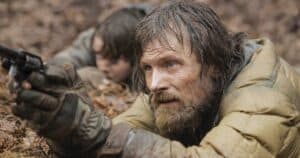

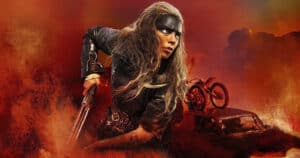
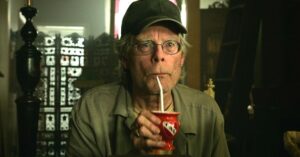
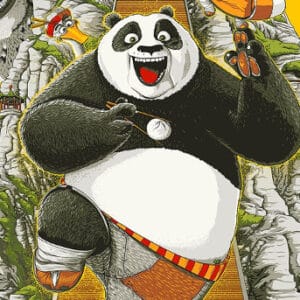
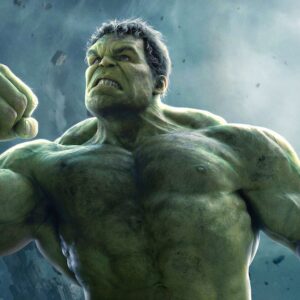
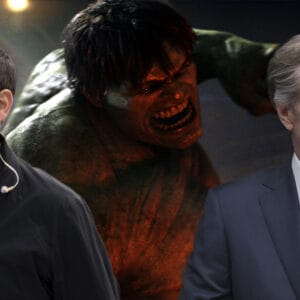
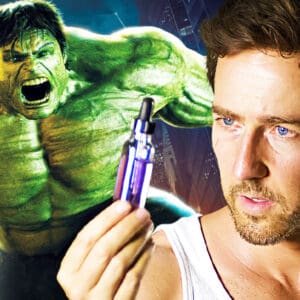
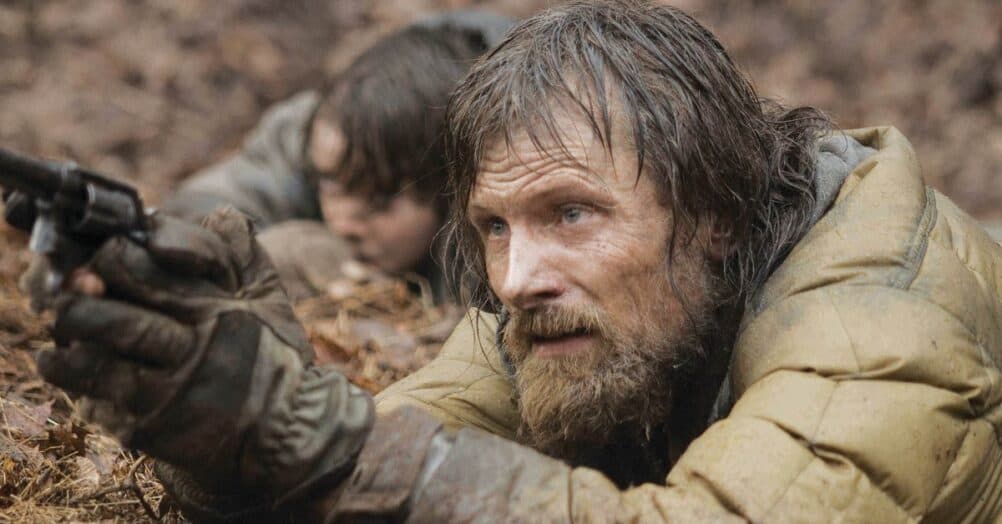

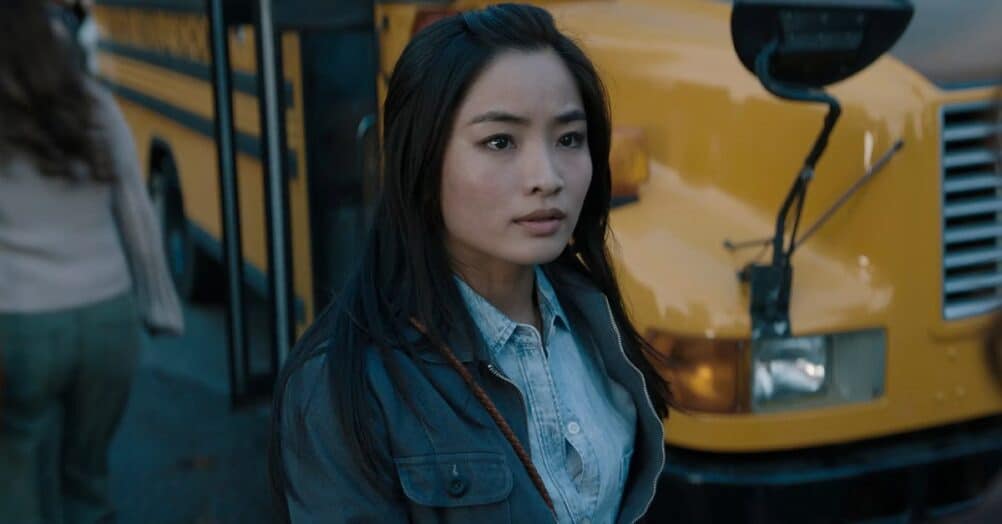
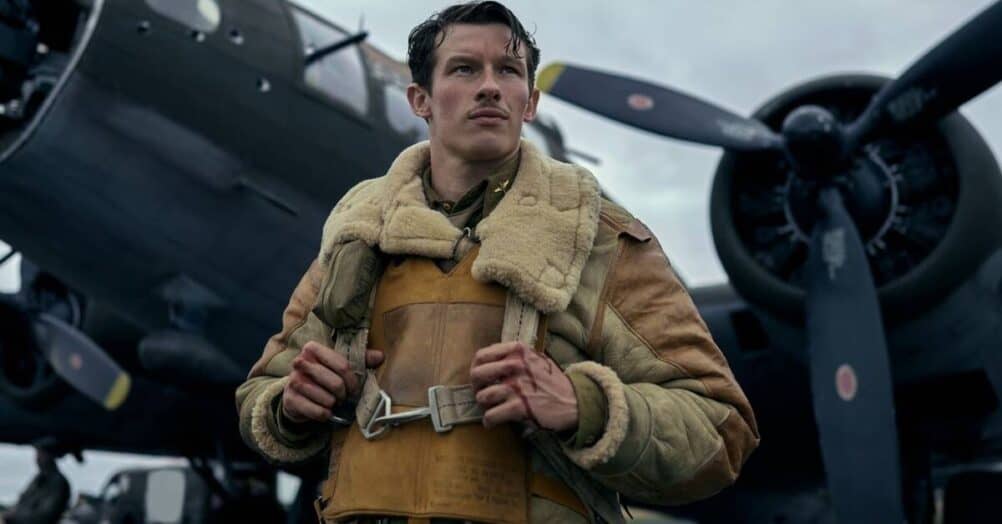
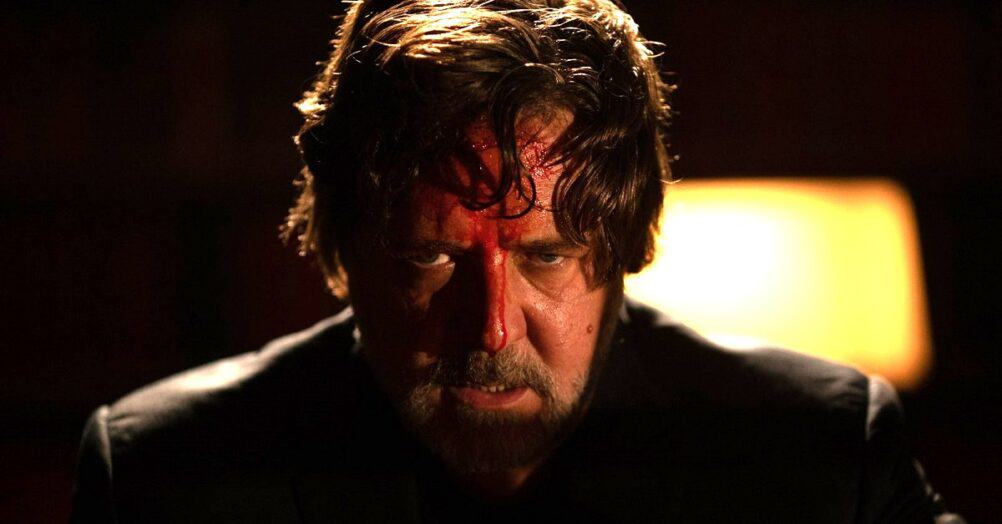
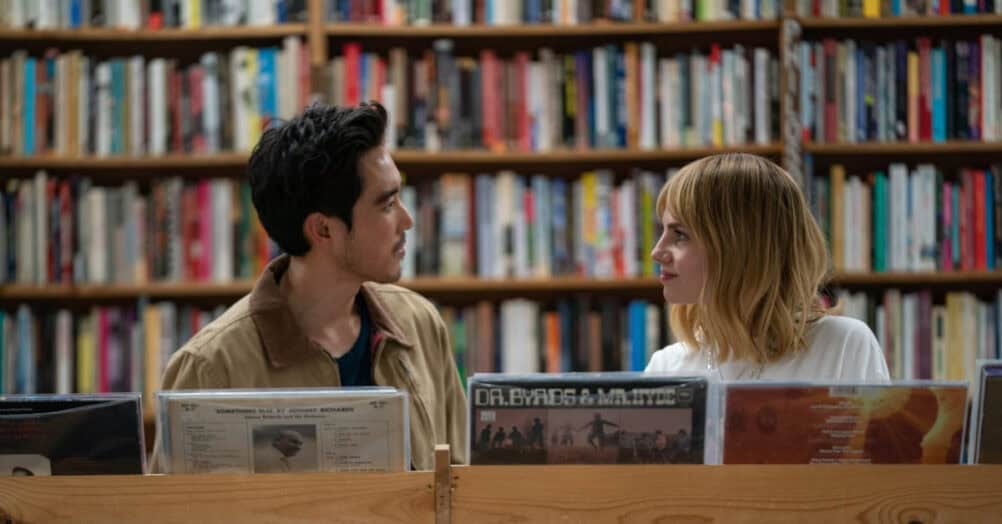
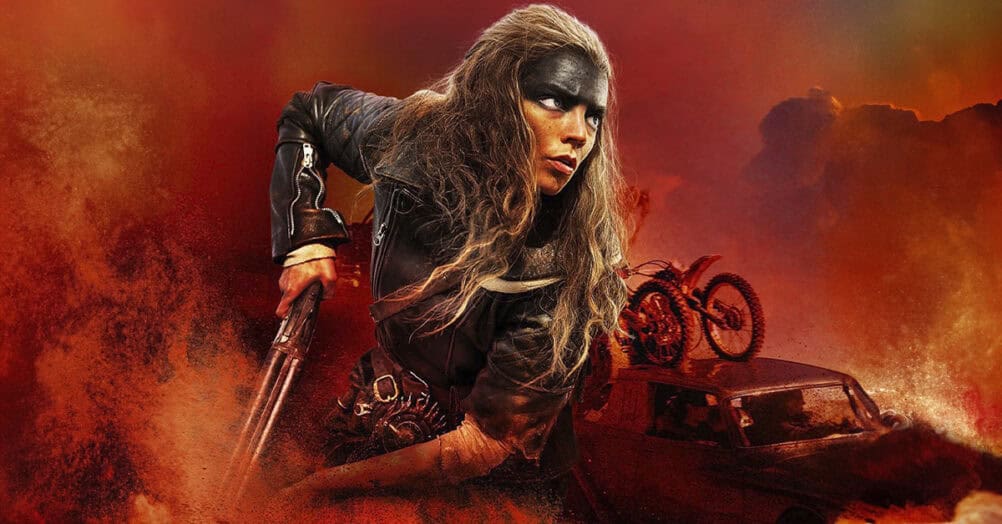
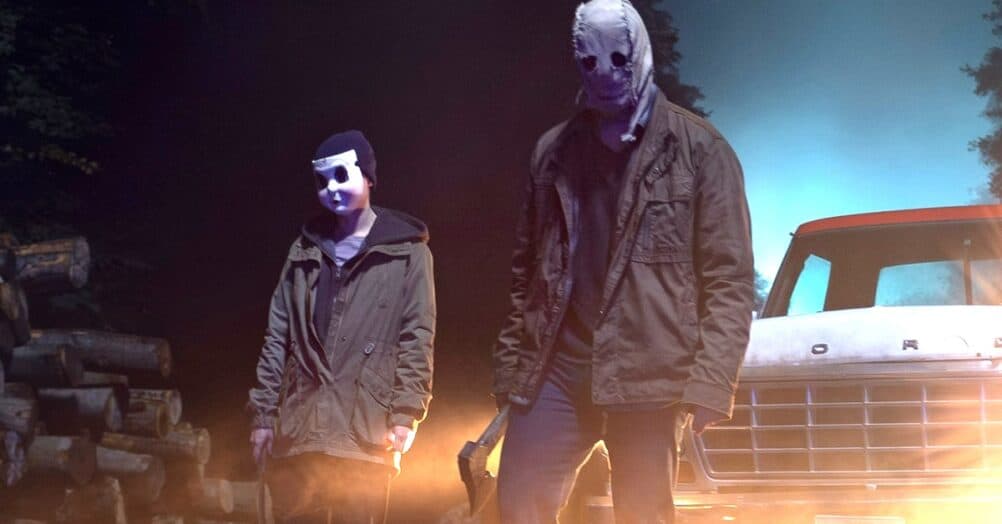
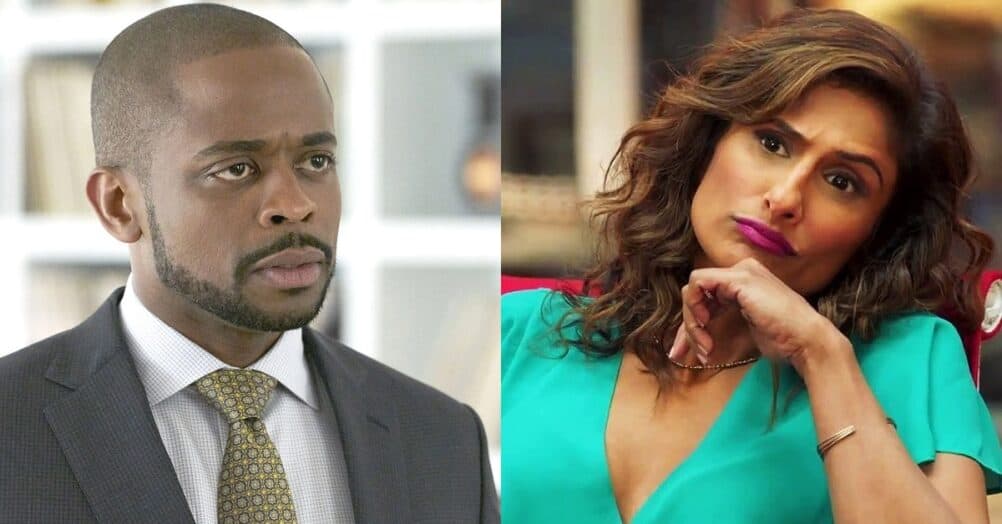
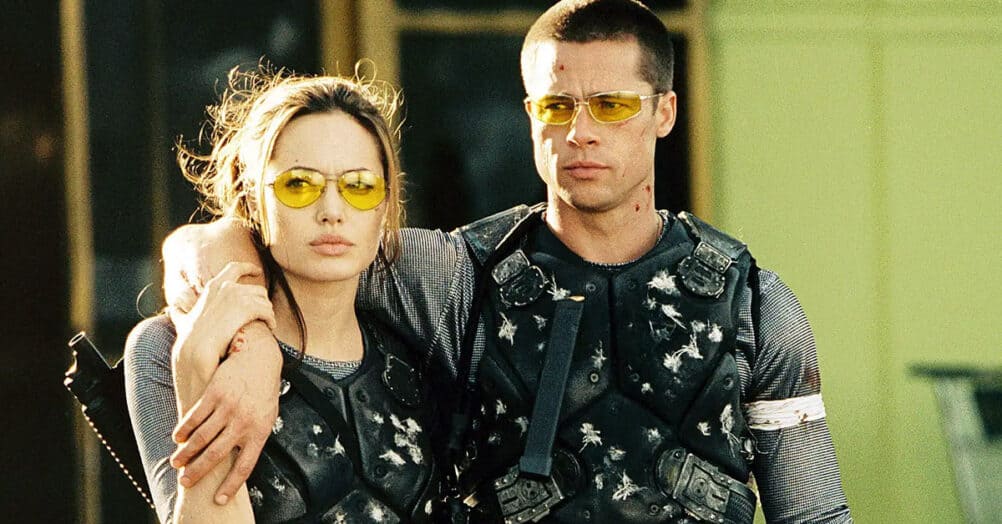
Follow the JOBLO MOVIE NETWORK
Follow us on YOUTUBE
Follow ARROW IN THE HEAD
Follow AITH on YOUTUBE